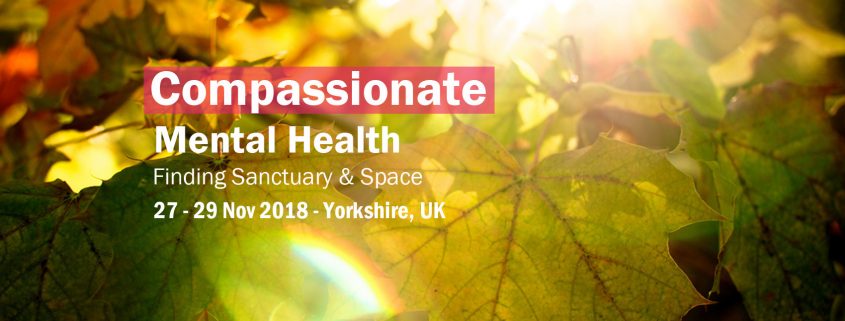Safe spaces to talk about suicide by Rufus May
A few years ago I organised a public meeting about suicide. To spread the word, I put up posters around my town with the question, ‘How do we live with suicidal ideas?’ printed across them. The manager of a local launderette started taking the posters down. He said he was banning me from advertising on his premises because he was upset by that question.
We don’t often create spaces where we can talk freely about the temptation to end it all. But it’s a consideration many of us will have at some point in our lives. I think we need to acknowledge it’s an understandable response when we feel overwhelmed and there is no one to turn to.
Finding Meaning and Acceptance
In my old workplace, the managers ordered the tall, solitary conifer in the garden of the psychiatric ward to be sawed down after one man tried and failed to hang himself from it.
In the mental health system, the emphasis is more on stopping the act rather than creating an accepting atmosphere where these tortuous feelings can be understood and possibly lived with. The danger is we attempt to keep people alive not by helping them find meaning, but by submitting them to tactics of control and surveillance.
Where does this state of panic about suicide come from? Why are we so frightened to sit with suicidal feelings, and to express them?
The power of exclusion and taboo
On the hill above where I live in West Yorkshire there is a circle of stones that offers me some clues. It’s known as ‘The Miller’s Grave’. In the late 1700s, a miller from the village of Heptonstall took his own life. As was the law, his body was excluded from the community; he was buried outside the parish at the crossroads between localities.
But if you try to suppress something, you give it more power. There were reports of people travelling between parishes seeing the miller’s ghost as they approached the crossroads. The fear created by these sightings opened up a debate about where best the miller should be buried. A group of people wanted to dig him up and repatriate him in his village cemetery, but another group was terrified of the consequences.
A fight broke out and the men trying to protect the body were attacked. Such panic and confusion is indicative of the taboo and punitive approach we have had culturally towards suicide. The word ‘commit’ is a hangover from when it was still a crime.
Up until 1961, suicide was a punishable offence. Until 1822, the crown was entitled to the dead person’s possessions, reducing many families to poverty. Suicide was made illegal in the mid 13th century but was seen as a mortal sin by the church long before then. For our culture, the forbidden nature of the act distracts us from other possible meanings.
Expressing, not suppressing
When African American slaves committed suicide it was often seen by abolitionists as a form of social protest In my own life, this is how I tend to view the decision to willingly precipitate one’s own death.
I have had friends who killed themselves, and while it has been deeply painful, I have also tried to find ways to understand their decisions. When I was 18, Selina, a friend I made while in psychiatric hospital, jumped to her death from a Hackney tower block. She had a fiery spirit and clearly, at times, was in a lot of distress, but the doctors’ only response was to sedate her.
The last time I saw her, she was trembling and dribbling because of the level of tranquilisers she was on. At her funeral hundreds of people turned up. I remember feeling this perplexed outrage – where had all these people been when she was in psychiatric hospital? It looked like too much too late.
I don’t know what it was that Selina could no longer bear to live with, but my sense is that as a community we were not able to sit with her pain and help her find faith in the world again. It was her death that inspired me to train as a psychologist and promote more holistic approaches to confusion and distress.
Rather than suppressing their experiences, I wanted to learn how to help people diffuse their conflicts in other ways.
………………………………………………………………………………………………………………………………………………………
Rufus May is one of our facilitators at Compassionate Mental Health – Finding Sanctuary & Space Book now to join Rufus and members of the Bradford Hearing Voices group on November 27 – 29 Limited spaces and tickets include all food & refreshments, use of Avalon wellbeing centre and screening of Kusama documentary film, plus a range of workshops and talks from leading voices.
Plenty of opportunities for participation, reflection and building community.




Is anyone talking about changing the Governments policy on mental illness?
Better management of the Government and of the public sector (including the NHS) would be a good topic also
I suggest ISO 9001